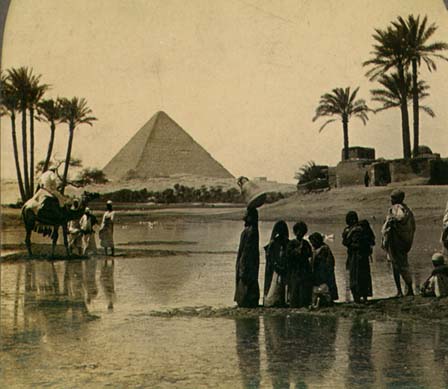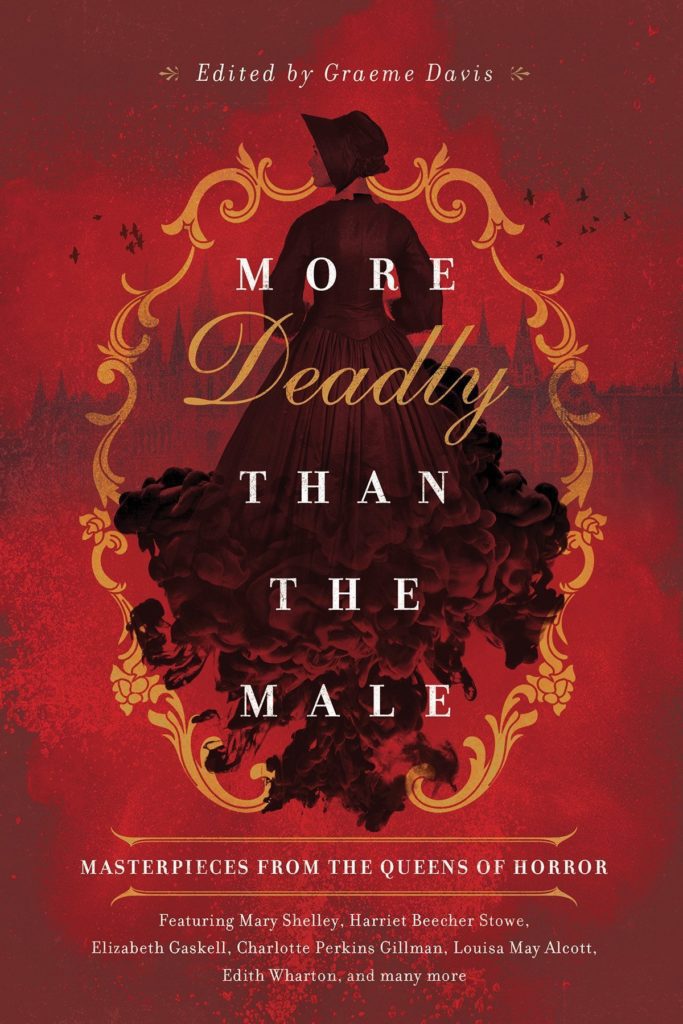Rudyard Kipling wrote, “For the female of the species is more deadly than the male,” in his 1911 poem. It was not warriors or kings that need be feared, he suggested, but the women who worked in mischievous ways. Here editor Graeme Davis brings together ghostly horror stories penned by women from the long 19th century.
Readers will recognize some of the contributors as commonly associated with the Gothic — Mary Shelley, Elizabeth Gaskell, Charlotte Perkins Gilman and Helena Blavatsky. Others are familiar names not usually known for their ghost stories — Harriet Beecher Stowe, Louisa May Alcott and Edith Wharton. And some are names have simply lost popularity over time — Elizabeth Phelps, Eliza Linton, Vernon Lee and Mary Austin. Starting with “The Transformation” by Mary Shelly in 1830 and ending with “The Readjustment” by Mary Austin in 1908, Davis strings together a historical timeline of ghost stories informed by society and current events.
“Lost In The Pyramid, or The Mummy’s Curse” by Louisa May Alcott plays on the public’s insatiability for anything Egyptian. Ancient and mysterious, it held a mystic curiosity for scientists, writers, historians and readers. The narrator has returned from an expedition during which he explored a pyramid. He becomes disoriented trying to find his way out and comes upon a mummy. Hoping to signal his guide, he sets the wooden coffin on fire, but not before revealing a parchment identifying the supposed sorceress whose remains he has disturbed. He also removes a box of seeds from the coffin before escaping the tomb. It’s no surprise that the seeds grow a dangerous plant and carry out the mummy’s curse.

“Tom Toothacre’s Ghost Story” by Harriet Beecher Stowe uses the “gather around the fire” storytelling device so popular in New England tales.
We boys had made preparation for a comfortable evening. We had enticed Same to the chimney-corner, and drawn him a mug of cider. We had set down a row of apples to roast on the hearth, which even now were giving faint sighs and sputters as their plump sides burst int he genial heat. The big oak back-log simmered and bubbled, and distilled large drops down amid the ashes; and the great hickory forestick had just burned out into solid bright coals, faintly skimmed over with white ashes. The whole area of the big chimney was full of a sleepy warmth and brightness just calculated to call forth fancies and visions. It only wanted somebody not to set Same off; and Aunt Nabby broached the ever-interesting subject of haunted houses. ~ Pg. 115
And Stowe employs the local dialect of a sailor as she lets him tell his story of a haunted ship making it all the more familiar to its audience. Stowe’s is a jaunty tale, while “The Fate of Madame Cabanel” is cautionary. “The Tyburn Ghost” relies on shivers and setting and “The Yellow Wall Paper” is psychological. Some stories are brighter, and hold up better in modern times, but each is a classic example of its day, its genre and its author.
My thanks to Pegasus Books for the advanced copy.
Edited by Graeme Davis
Hardcover: 496 pages
Publisher: Pegasus Books (February 5, 2019)
Language: English
ISBN-10: 1643130110
ISBN-13: 978-1643130118
Product Dimensions: 6 x 9 inches

